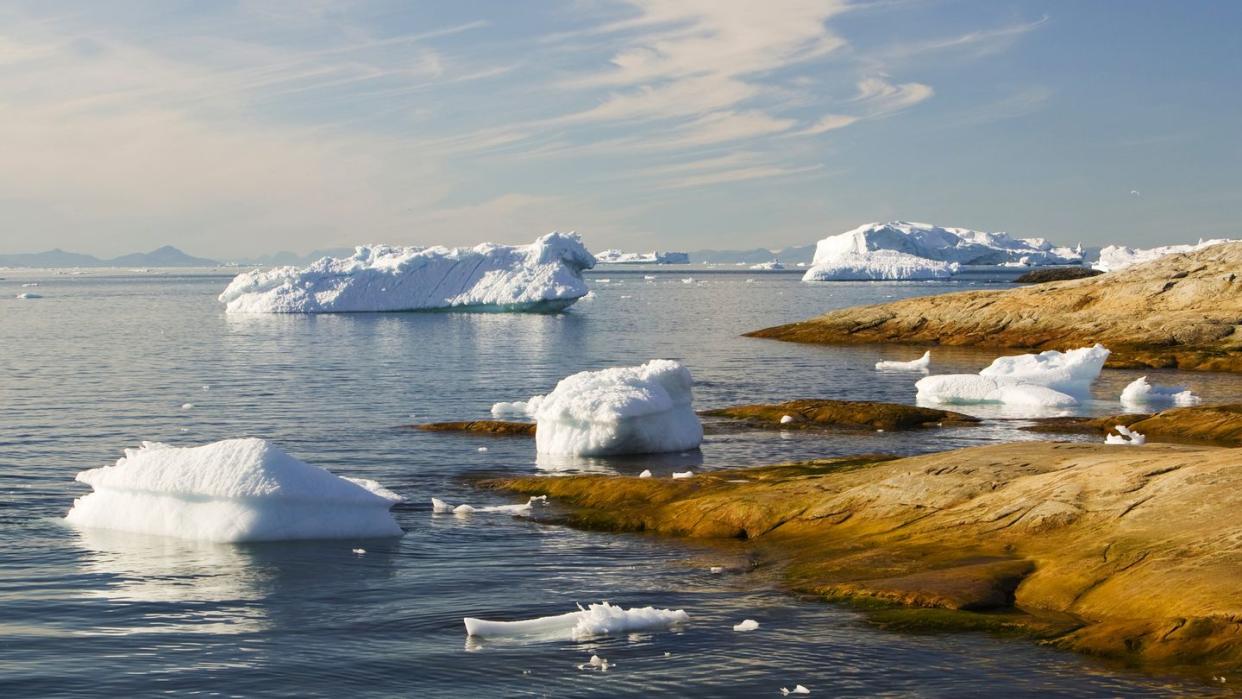The Arctic Might Be ‘Ice-Free’ Within A Decade

The Intergovernmental Panel on Climate Change previously predicted that the Arctic would be ice-free in the summer by the 2040s, but scientists have been revising that estimate.
A new study from the University of Colorado Boulder adds new evidence to that new estimate, stating that Arctic could be ice-free in August or September as early as the 2020s or 2030s.
This is largely due to the fact that sea ice (which reflects solar radiation) melts into open ocean (which absorbs solar radiation).
Nowhere is climate change felt more acutely than in the arctic. Over the past four decades, the icy top of the world has been warming roughly four times faster than the rest of the planet. That means temperatures in the arctic have increased by more than 3 degrees Celsius since the early 1980s, and that big jump in temperature is largely due to sea ice—or lack thereof.
Ice usually acts a reflective blanket that bounces roughly 85 percent of solar radiation back out into space. But when there’s no blanket, there’s no bouncing. When that ice instead turns into open ocean, it absorbs 90 percent of solar radiation rather than reflecting it, which creates a feedback effect of increased warming.
For years, scientists have estimated that an ice-free Arctic during the summer months (around August or September) was inevitable, and would likely occur sometime in the 2040s. But lately, scientists have been revising that estimation. In the summer of 2023 (the warmest year on record, by the way), an international team of researchers published a paper that Arctic sea ice could disappear a full decade earlier than previous projections, and now a new study from the University of Colorado Boulder appears to confirm the bad news.
“When it comes to communicating what scientists expect to happen in the Arctic, it is important to predict when we might observe the first ice-free conditions in the Arctic, which will show up in the daily satellite data,” University of Colorado Boulder’s Alexandra Jahn said in a press statement. “This would transform the Arctic into a completely different environment, from a white summer Arctic to a blue Arctic.”
An “ice-free” Arctic doesn’t mean the polar region is completely ice-free, as the name suggests. Instead, scientists consider ice covering only 1 million square kilometers (386,000 square miles) to be the all-important threshold, which is only 20 percent of what ice coverage was like during Arctic summers in the 1980s.
By analyzing existing data on sea ice—as well as poring over ice coverage data from computational climate models—Jahn and her team discerned that under all climate scenarios, including ones where we aggressively tackle the underlying human drivers of climate change, an ice-free Arctic is likely to appear sometime in the 2020s or 2030s.
Less ice means a warmer ocean, but it also means accompanying sea level rise that will endanger coastal communities around the world. Additionally, sea ice plays an important role in hampering ocean waves and lowering coastal erosion, which spells trouble for coast-hugging cities and island nations. These warmer waters could also cause non-native fish to begin exploring Arctic waters, which would likely wreak havoc on these already fragile ecosystems.
Although an ice-free Arctic is inevitable, humanity’s response to this global crisis matters immensely. If we can start eliminating emissions as soon as possible—and, even better, pulling existing carbon out of the atmosphere—then the Arctic could remain only sans ice from August to October, rather than the full nine months predicted by the worst climate scenarios. Another piece of good news is that sea ice is also responsive to temperature in the reverse.
“Even if ice-free conditions are unavoidable, we still need to keep our emissions as low as possible to avoid prolonged ice-free conditions, Jahn said in a press statement. “Unlike the ice sheet in Greenland that took thousands of years to build, even if we melt all the Arctic sea ice, if we can then figure out how to take CO2 back out of the atmosphere in the future to reverse warming, sea ice will come back within a decade.”
You Might Also Like


